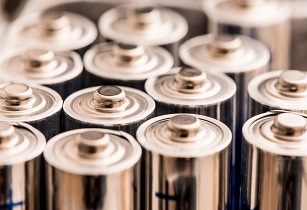According to analysts Susan Zou and Abhishek Murali at Rystad Energy, the mining capacity of battery metals on the African continent is remaining attractive as the world faces a constrained raw material supply
 Certain countries in Africa are going to contribute to increasing number of lithium minerals to the global battery supply chain. (Image source: Adobe Stock)
Certain countries in Africa are going to contribute to increasing number of lithium minerals to the global battery supply chain. (Image source: Adobe Stock)
The Rystad report began by focusing on Mali where construction has just begun on a new world-class lithium mine. The Malian Minister of Energy, Mines and Water, Lamine Seydou Traoré, announced the start of the construction work of the Goulamina Lithium Project in the Bougouni region in the country.
This project will be one of the largest hard rock lithium mines in the world and is estimated to reach an annual capacity of producing spodumene concentrates at over 90,000 tonnes of lithium carbonate equivalent.
Ganfeng Lithium, a Chinese lithium producer, has acquired a 50% stake in the mine for US$130mn and Australia-listed Firefinch holds the remaining 50% stake.
Apart from the traditional suppliers of lithium, namely, Australia, Chile and Argentina, certain countries in Africa are going to contribute to increasing number of lithium minerals to the global battery supply chain.
In 2025, the Rystad Energy analysts estimate that Africa will account for about 10% of the lithium mine capacity globally. At least eight lithium projects are expected to start production in the next 1-3 years, and some of them have been fully or partially acquired by Chinese companies.
The involvement of Chinese companies is likely to guarantee the planned development of those lithium projects. That said, less developed transportation infrastructure in some areas in Africa might post some challenges to the scheduled start-up of production and shipment of lithium from the continent.
The mining capacity on the African continent is particularly attractive as the world faces a constrained raw material supply.
BYD Auto has reportedly been in talks to purchase six mines on the continent as they look to keep up with their growing needs for internal supply and meeting offtake agreements for other automakers.
The mines currently operating in Africa have a combined capacity of around 250 ktpa Lithium Carbonate Equivalent.
However, most of these are yet to realise their operating status which would mean meaningful supply from this region would take close to four to five years to hit the market.
Further, all these mines are already owned via joint ventures with other mining companies, if BYD is indeed to invest in mines, they would either have to break ground on unexplored reserves, or purchase stakes from the existing projects, the latter of which would be a more expensive and difficult affair for the company.
The lithium supply for these African mines could in theory have enough supply for BYDs models for a decade.
There is however the challenge of running out if BYD pushes ahead with its expansion plans into Europe and sees a shift in its BEV sales to PHEV sales ratio.
Currently, BYDs EV sales are split almost equally between BEVs and PHEVs and has stopped producing or selling ICEs since April.
Given the various ESG concerns surrounding mining operations in Africa, these big investments are an indication that securing supply is right now at the forefront of companies concerns.
Addressing ESG concerns from the get-go as well as scaling their supply chain will require a challenging balancing act for the industry.
2021-2022 has witnessed a flurry of investment and commencement of construction of lithium projects due to high lithium prices.
The battery-grade lithium carbonate price, China ex-works basis, currently sits around US$70,769 per tonne this week, unchanged from one month ago.
Despite a slight price retreat in May, lithium prices are still hovering around their historical high.
The overall tight supply in the upstream mining sector will keep the prices of lithium compounds at relatively high levels for the rest of this year, despite intermittent price retreats. Demand for the remainder of the year will remain robust despite production disruptions at some OEMs due to the two-month lockdown in Shanghai
OEMs globally are rushing against a deadline and attempting to produce more units before subsidies in China and some countries in Europe are gradually phased out from 2023 onwards.




